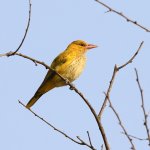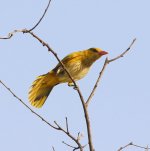-
Welcome to BirdForum, the internet's largest birding community with thousands of members from all over the world. The forums are dedicated to wild birds, birding, binoculars and equipment and all that goes with it.
Please register for an account to take part in the discussions in the forum, post your pictures in the gallery and more.
You are using an out of date browser. It may not display this or other websites correctly.
You should upgrade or use an alternative browser.
You should upgrade or use an alternative browser.
Black-naped Oriole immature ? (1 Viewer)
- Thread starter mahdi.naghibi
- Start date
More options
Who Replied?
Hi mahdi.naghibi and a warm welcome to you from all the Staff and Moderators. I've move your post to the Bird Identification Q&A forum, where more people are likely to see it.
I'm sure you will enjoy it here and I look forward to hearing your news.
I'm sure you will enjoy it here and I look forward to hearing your news.
mahdi.naghibi
Member
Thanks, I'm new to this site and have no ideaHi mahdi.naghibi and a warm welcome to you from all the Staff and Moderators. I've move your post to the Bird Identification Q&A forum, where more people are likely to see it.
I'm sure you will enjoy it here and I look forward to hearing your news.

No worries. I'm sure someone will soon be along to help you. It does look rather like an oriole, but I couldn't really confirm that.Thanks, I'm new to this site and have no idea
Barbets48
Well-known member
Yes, a quick look at eBird range maps confirms what nartreb shared: Black-naped Oriole would be quite ununsual in Iran. A female/immature Eurasian Golden Oriole looks like a decent match for your photos, and just based on range would be the only likely oriole in that area.
mahdi.naghibi
Member
In the past years, birds from India and South Asia were observed in the south and southeast of Iran in the winter season.Black-naped should be very unlikely in Iran. I'd suggest Eurasian Golden oriole, but I don't have any experience IDing either species.
This is not a new thing
mahdi.naghibi
Member
It is not unusual to see the Black-naped Oriole in Iran. The following has been seen in the Persian Gulf region beforeYes, a quick look at eBird range maps confirms what nartreb shared: Black-naped Oriole would be quite ununsual in Iran. A female/immature Eurasian Golden Oriole looks like a decent match for your photos, and just based on range would be the only likely oriole in that area.
MJB
Well-known member
I just want to be certain, Mahdi, that we are discussing Black-naped Oriole Oriolus chinensis. and not imperfectly marked Eurasian Golden Oriole O. oriolus or Indian Golden Oriole, O. kundoo.It is not unusual to see the Black-naped Oriole in Iran. The following has been seen in the Persian Gulf region before
Now, I haven't seen mention of Indian Golden Oriole by the Iran Bird Records Committee since the first record on the Konark coast, Chabahar, Sistan & Baluchestan in December 2021, which was also a first record for the Extended Western Palearctic An earlier record by Zarudny (1911) was removed from the Iran List on the grounds that the description did not eliminate Eurasian Golden Oriole which occurs on passage and breeds in North Iran. Of course, I may have missed other Iran records of O. kundoo since 2021. When Birds of Iran was published in 2017, only Oriolus oriolus was mentioned: during my contribution to that book, I did ask if there were any records of vagrancy to Iran from Afghanistan of O. kundoo, and enquired if any museum specimens had been wrongly identified as O. oriolus, but the answer to both queries was in the negative.
The only record I know of Black-naped Oriole in the OSME Region of the Extended Western Palearctic is one from Thumrait, Oman in December 2011, but again, there may well be others that I have missed.
I would therefore very much appreciate any published citation of O. kundoo and O. chinensis in Iran in addition to those I've mentioned.
MJB
Last edited:
nartreb
Speak softly and carry a long lens
eBird does show one record of Black-naped across the gulf in a park in Dubai, in February 2012. It was seen by multiple observers, here is the only one who provided photos:
Eurasian Golden sightings on eBird are more numerous throughout the Gulf region, though also infrequent. It seems possible that some of these birds are misidentified. What we need is someone who can tell us how one might differentiate between these two/three species in the field (or whether it is even possible to do so).
Eurasian Golden sightings on eBird are more numerous throughout the Gulf region, though also infrequent. It seems possible that some of these birds are misidentified. What we need is someone who can tell us how one might differentiate between these two/three species in the field (or whether it is even possible to do so).
Houman Doroudi (Tormtay)
Well-known member

Black-naped Oriol, immature
Indobirder
Well-known member
Because....?Black-naped Oriol, immature
I have zero experience with either species. However, I'm curious what the distinctions are between the two. Adult male is easy to tell since the Eurasian only seems to show black in front of (and maybe slightly behind) the eye, however juveniles/female look to me more similar.
Just checking a (very) few images online, it does look like the Black-naped juv/F has more streaking and shows a gray eye-stripe extending further back than Eurasian Golden.
To me this matches better to the OPs bird than a Eurasian Golden. So... apart from "likelihood", I don't see why this shouldn't be Black-naped?
This came up on a similar thread recently. A bit of research suggested that these Orioles can be extremely hard to tell apart. I'm not sure we ever found a foolproof set of characters. And also iirc that distributions are wrong and/or incompletely known with various things which the guides say are rare being recorded consistently
Houman Doroudi (Tormtay)
Well-known member

Because of my other photos from back of the bird.Because....?
I have zero experience with either species. However, I'm curious what the distinctions are between the two. Adult male is easy to tell since the Eurasian only seems to show black in front of (and maybe slightly behind) the eye, however juveniles/female look to me more similar.
Just checking a (very) few images online, it does look like the Black-naped juv/F has more streaking and shows a gray eye-stripe extending further back than Eurasian Golden.
To me this matches better to the OPs bird than a Eurasian Golden. So... apart from "likelihood", I don't see why this shouldn't be Black-naped?
Indobirder
Well-known member
Many thanks for replying!Because of my other photos from back of the bird.
Forgive my ignorance, but how does the back of the bird help in ID? Also, is there somewhere we can view your images?
I'm eager to understand the difference between these tricky to ID birds
Thank you!

Maybe it's a known individual (known in Iran)??
Added to Wikipedia's checklist of Iranian birds only on August 2: List of birds of Iran: Difference between revisions - Wikipedia.
EDIT: 7 February 2023, five days before the OP's photos were taken (although the OP was there at the time of its first sighting, too):
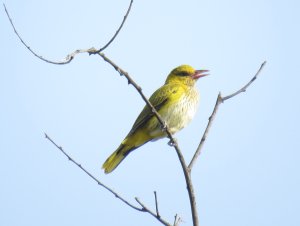
Same bird, same branch.
Was this particular instance a twitch? If so, the question remains: how was it initially identified/picked out?
Black-naped vs Indian (if ID'ed correctly):
From what I see in eBird, there were at least three Black-naped Orioles at the time and place (2 adult females and one immature)?
The only ID note I was able to find was:
Added to Wikipedia's checklist of Iranian birds only on August 2: List of birds of Iran: Difference between revisions - Wikipedia.
EDIT: 7 February 2023, five days before the OP's photos were taken (although the OP was there at the time of its first sighting, too):

Same bird, same branch.
Black-naped vs Indian (if ID'ed correctly):
From what I see in eBird, there were at least three Black-naped Orioles at the time and place (2 adult females and one immature)?
The only ID note I was able to find was:
there were no errors in identifying it due to its distinctive color.
Last edited:

Maybe photos of the back show the hint of the black nape mentioned previously?Because of my other photos from back of the bird.
ML542545421 - Black-naped Oriole - Macaulay Library
Macaulay Library ML542545421; © Elham Shaniti; Hormozgan, Iran
Black-naped Oriole - Oriolus chinensis - Media Search - Macaulay Library and eBird
Explore millions of photos, audio recordings, and videos of birds and other animals; powered by Macaulay Library and eBird. The Macaulay Library collects, archives, and distributes wildlife media for research, education, and conservation.
However, what rules out Indian Oriole with photos like this one?
ML542545961 - Black-naped Oriole - Macaulay Library
Macaulay Library ML542545961; © Elham Shaniti; Hormozgan, Iran
Grahame Walbridge
Well-known member
Black-naped should be very unlikely in Iran. I'd suggest Eurasian Golden oriole, but I don't have any experience IDing either species.
Elimination of Eurasian Golden is relatively straightforward by a combination of 1) too much yellow in the tail 2) pp too short 3) bill too heavy 4) WC's more solidly yellow-green, centres to MC and GC (when visible) black and crucially 5) black extends to nape which is just about visible in the lower image and presumably what HD is referring to when he says he has images of the back of the bird.Yes, a quick look at eBird range maps confirms what nartreb shared: Black-naped Oriole would be quite ununsual in Iran. A female/immature Eurasian Golden Oriole looks like a decent match for your photos, and just based on range would be the only likely oriole in that area.
Ruling out Indian is less straightforward but I would refer you to points 3), 4) and 5) above.
Black-naped ssp diffusus winters to Indochina, Malay Peninsula and S Asia and has reached Oman so its hardly surprising there are records from S Iran whereas, Indian (northern population) is a relatively short distance migrant.
Grahame
Last edited:

Hello, apologies, I don't understand No. 1 and No. 4.
Re No. 1: Is it about the amount of yellow in the undertail or in the uppertail? Does the validity of this criterion depend on the age of the birds under comparison?
Indian:
Uppertail:
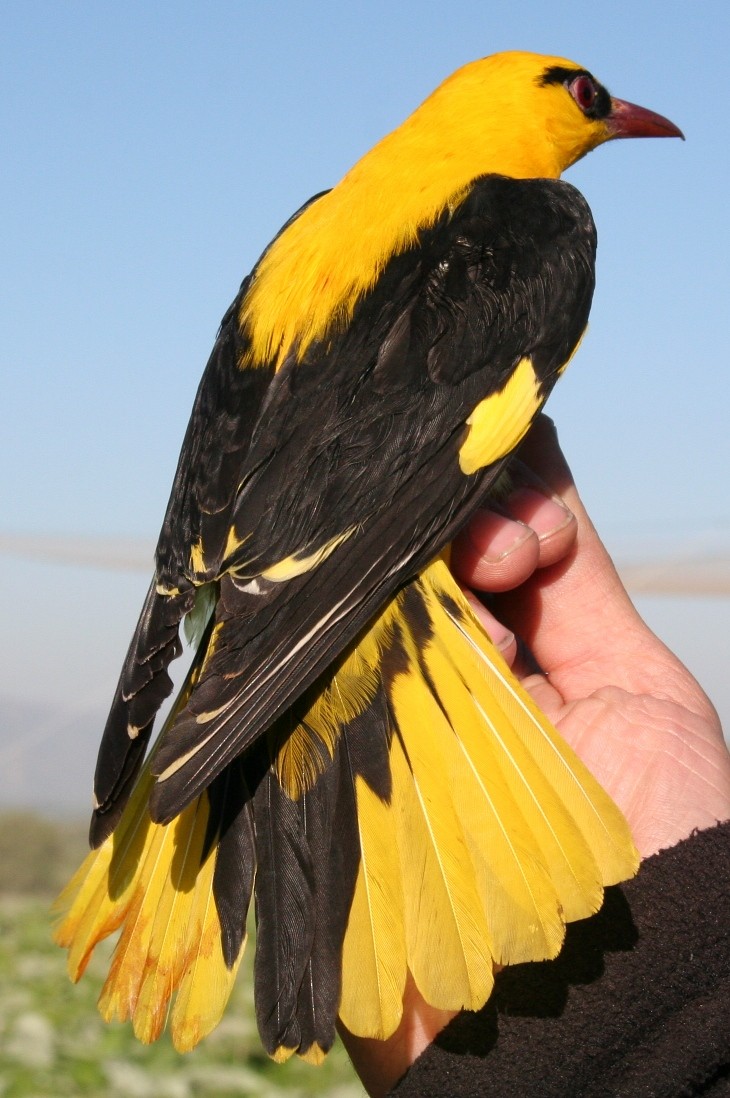
 macaulaylibrary.org
Undertail:
macaulaylibrary.org
Undertail:
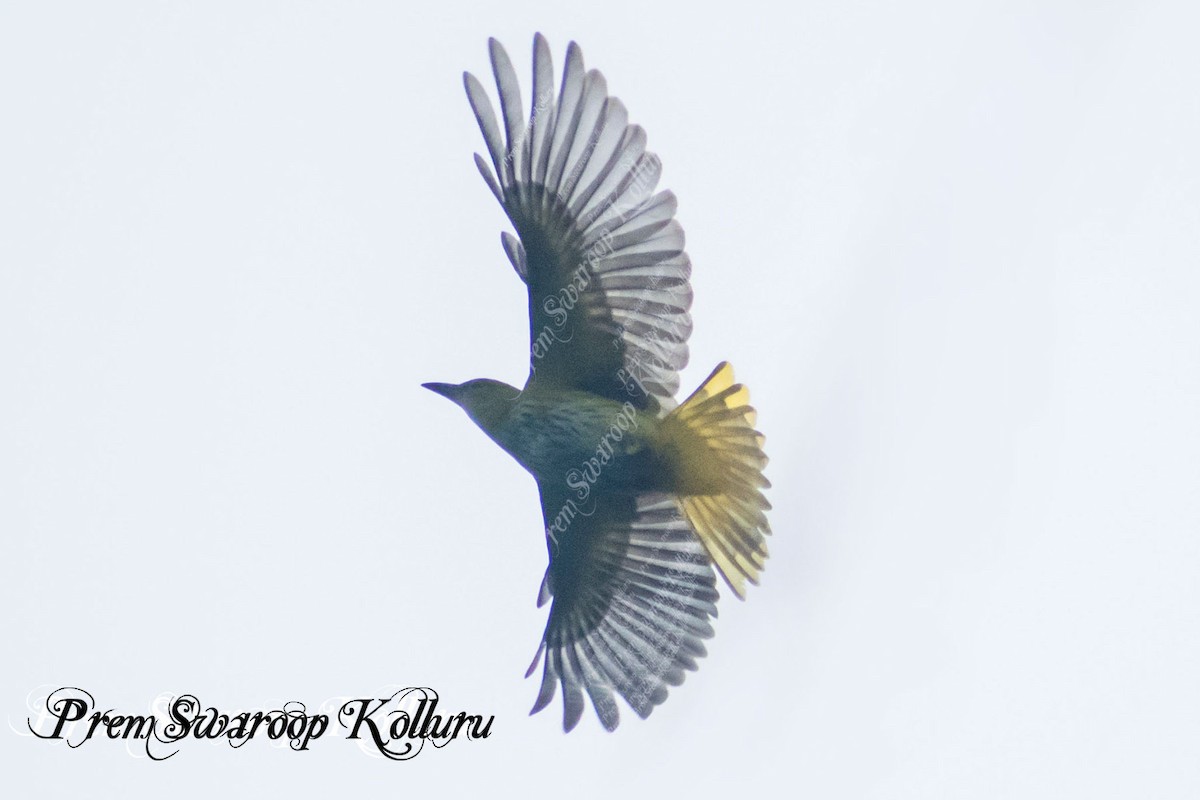
 macaulaylibrary.org
macaulaylibrary.org
Eurasian:
Uppertail:
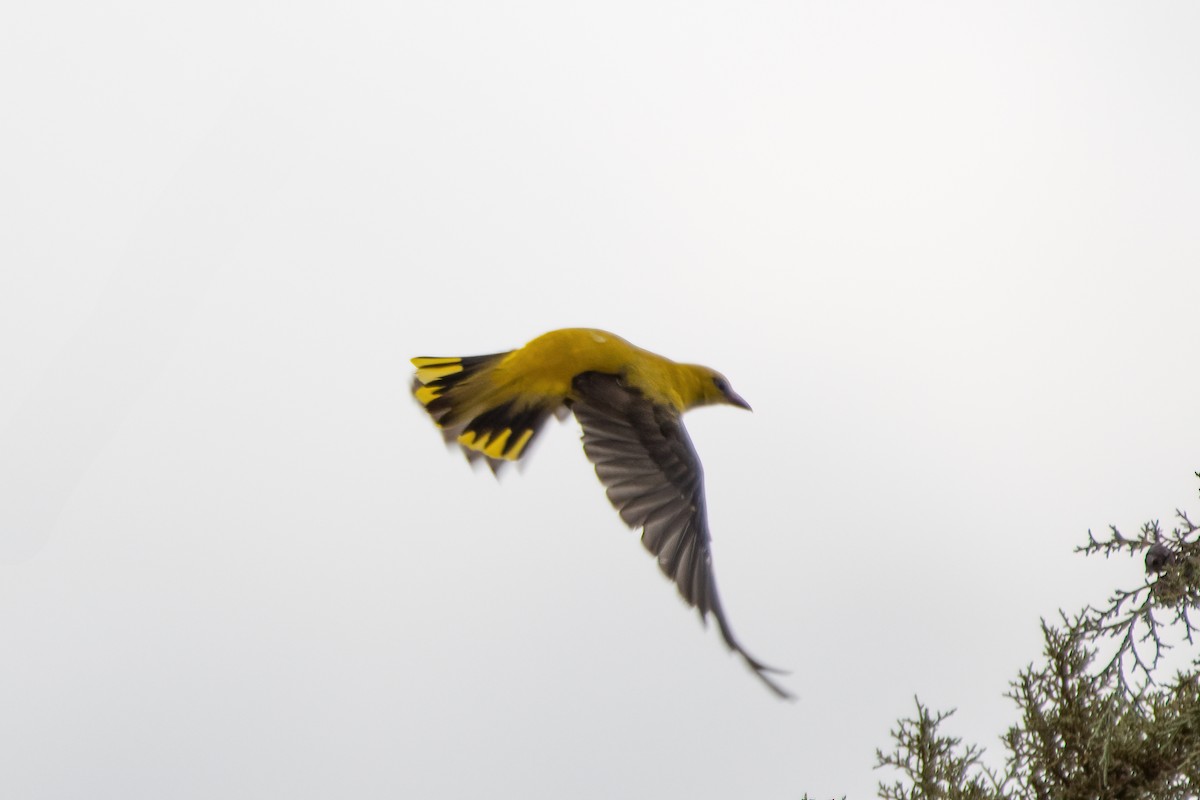
 macaulaylibrary.org
macaulaylibrary.org
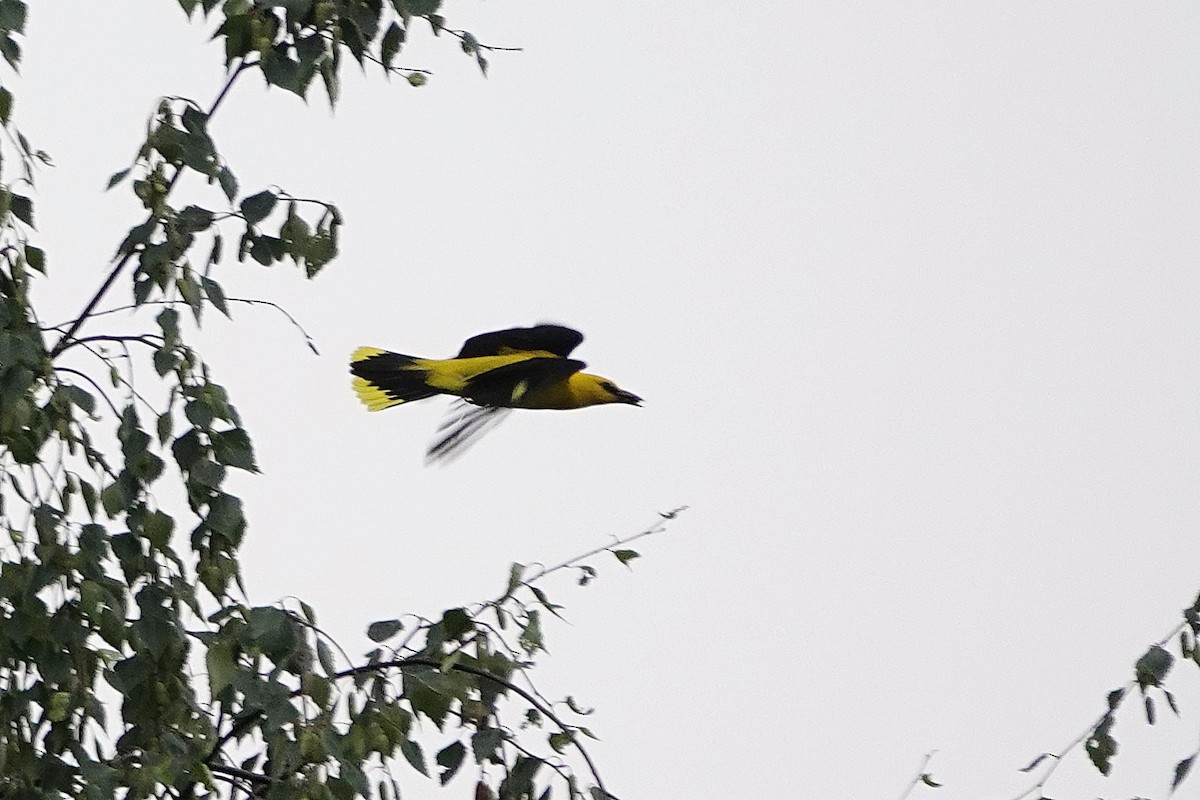
 macaulaylibrary.org
Undertail:
macaulaylibrary.org
Undertail:
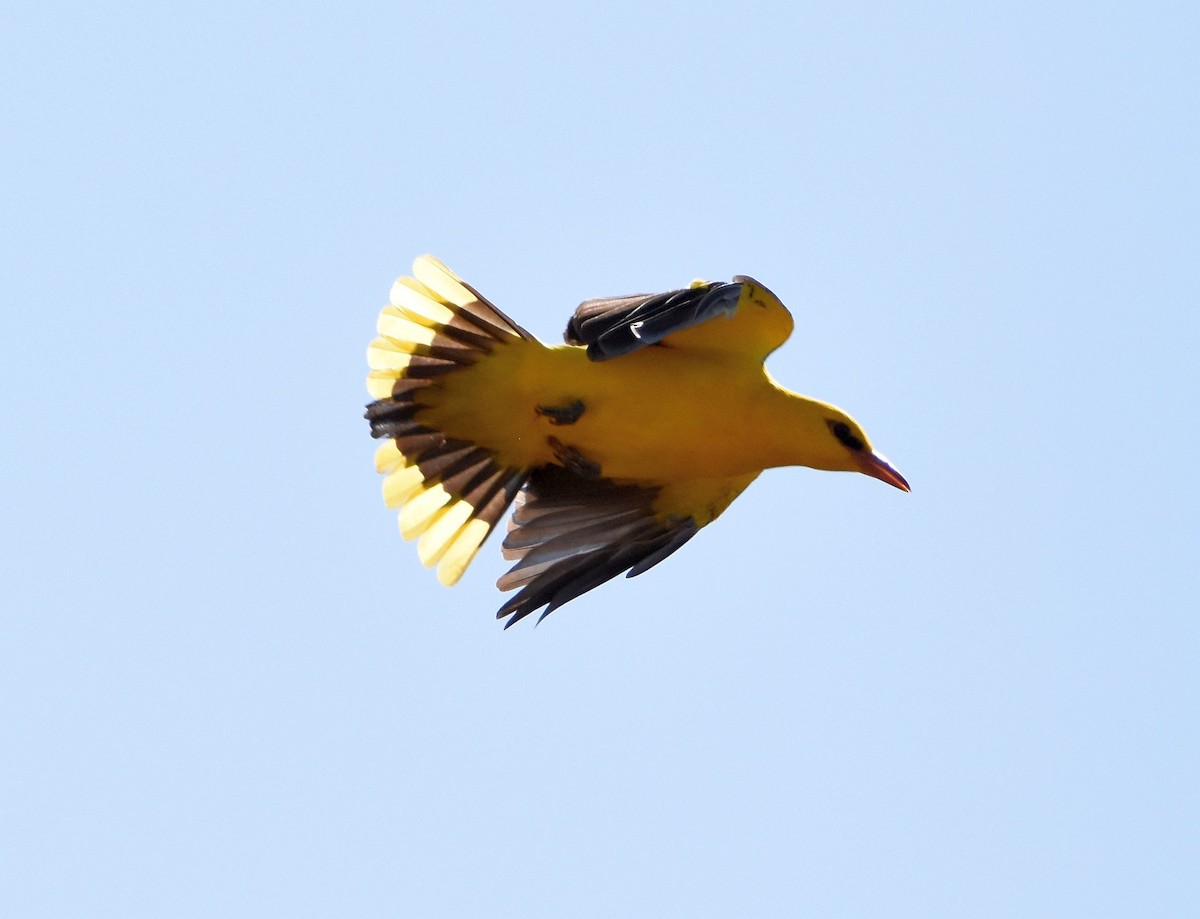
 macaulaylibrary.org
macaulaylibrary.org
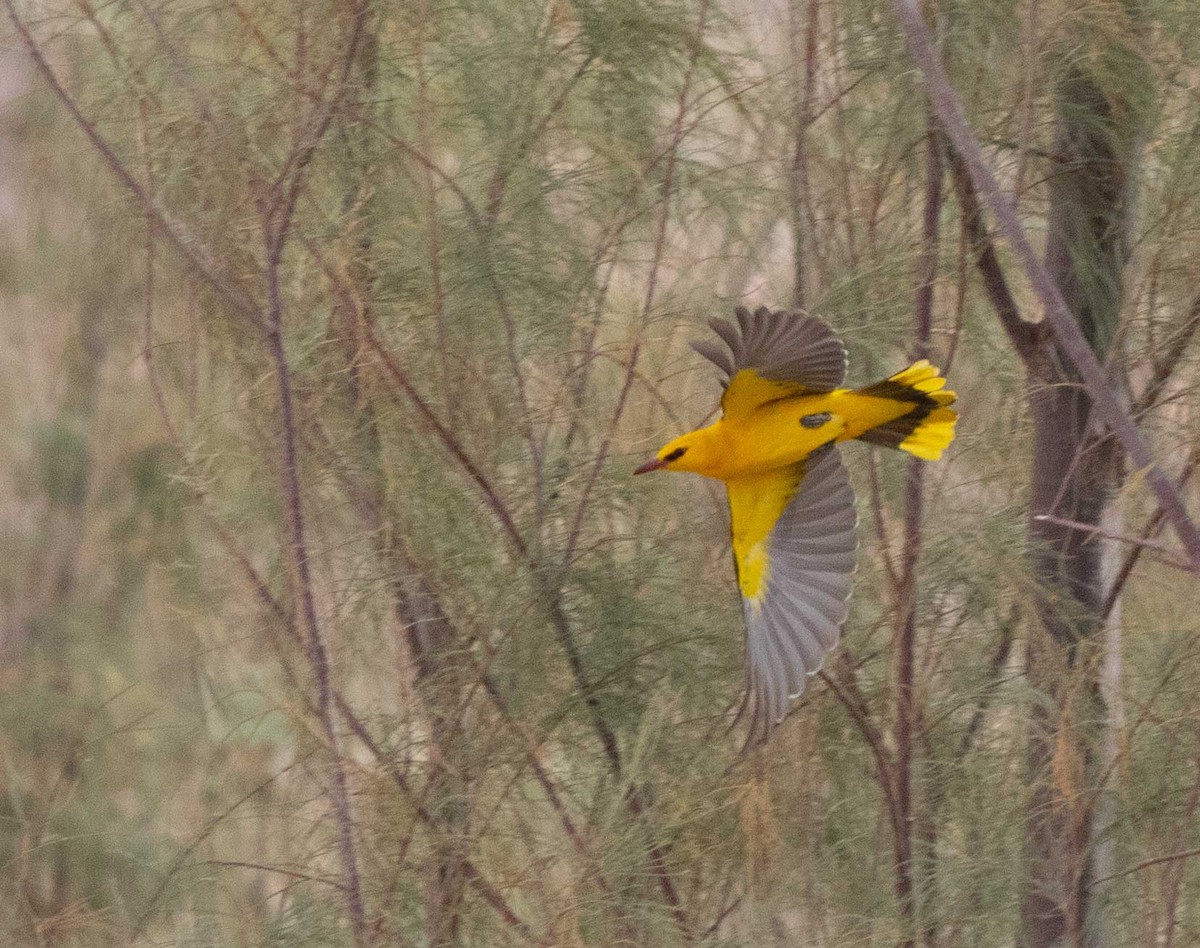
 macaulaylibrary.org
macaulaylibrary.org
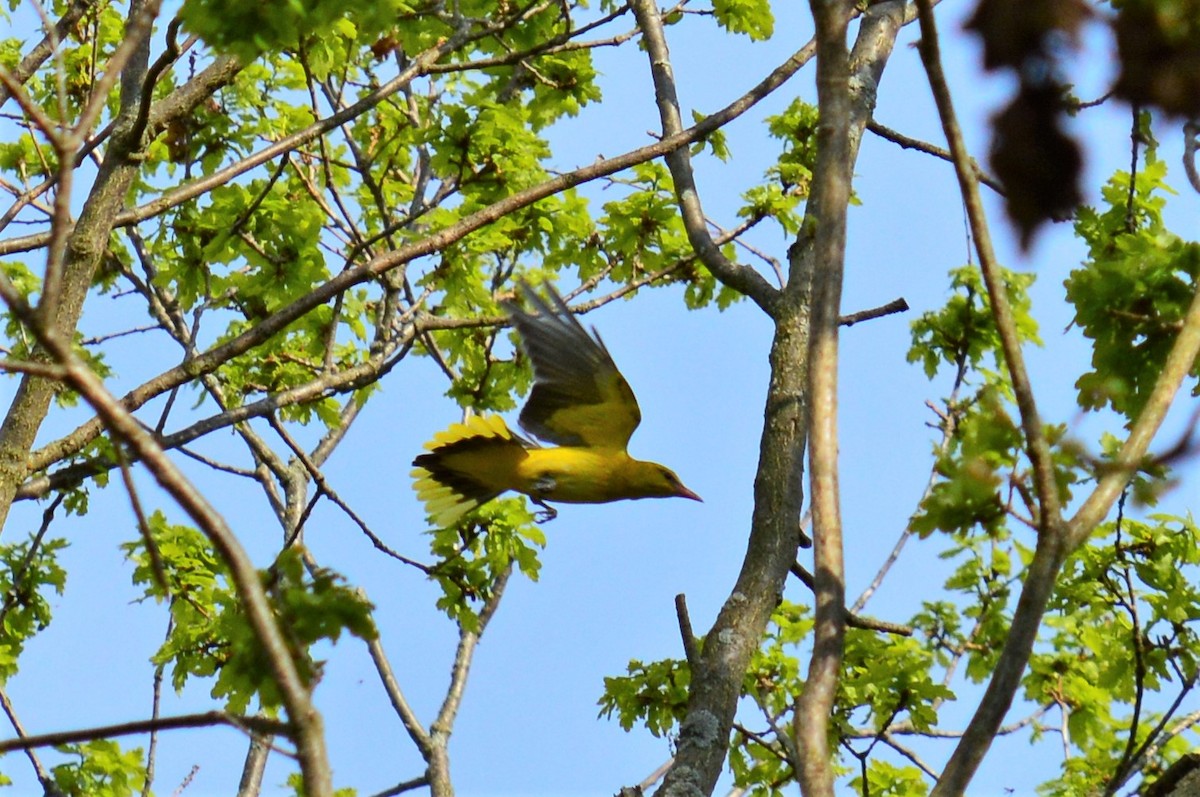
 macaulaylibrary.org
macaulaylibrary.org
Black-chinned:
Uppertail:
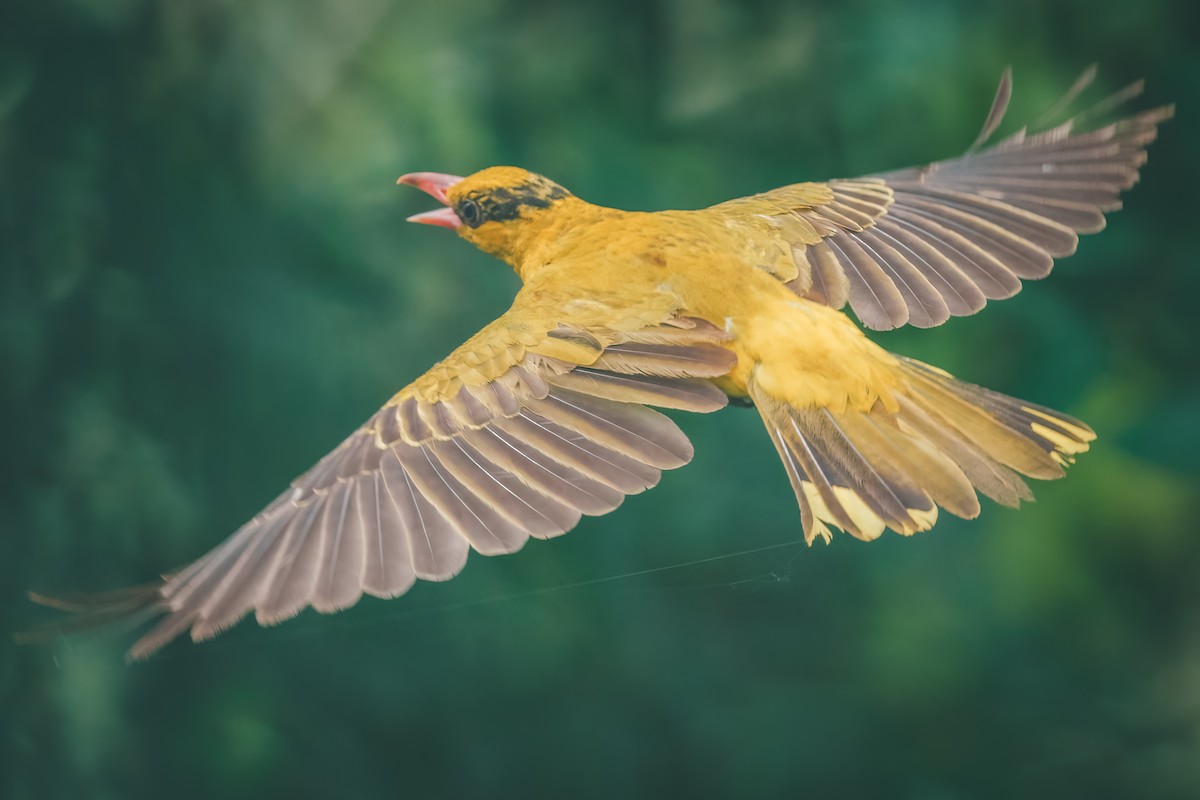
 macaulaylibrary.org
Undertail:
macaulaylibrary.org
Undertail:
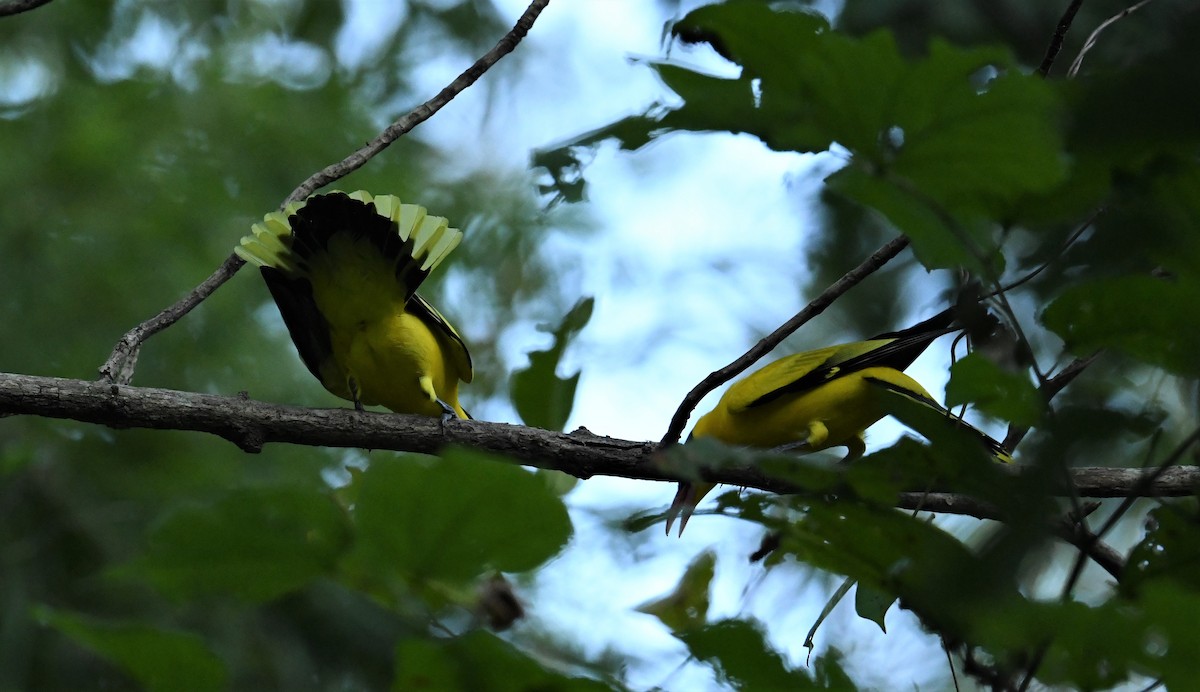
 macaulaylibrary.org
macaulaylibrary.org
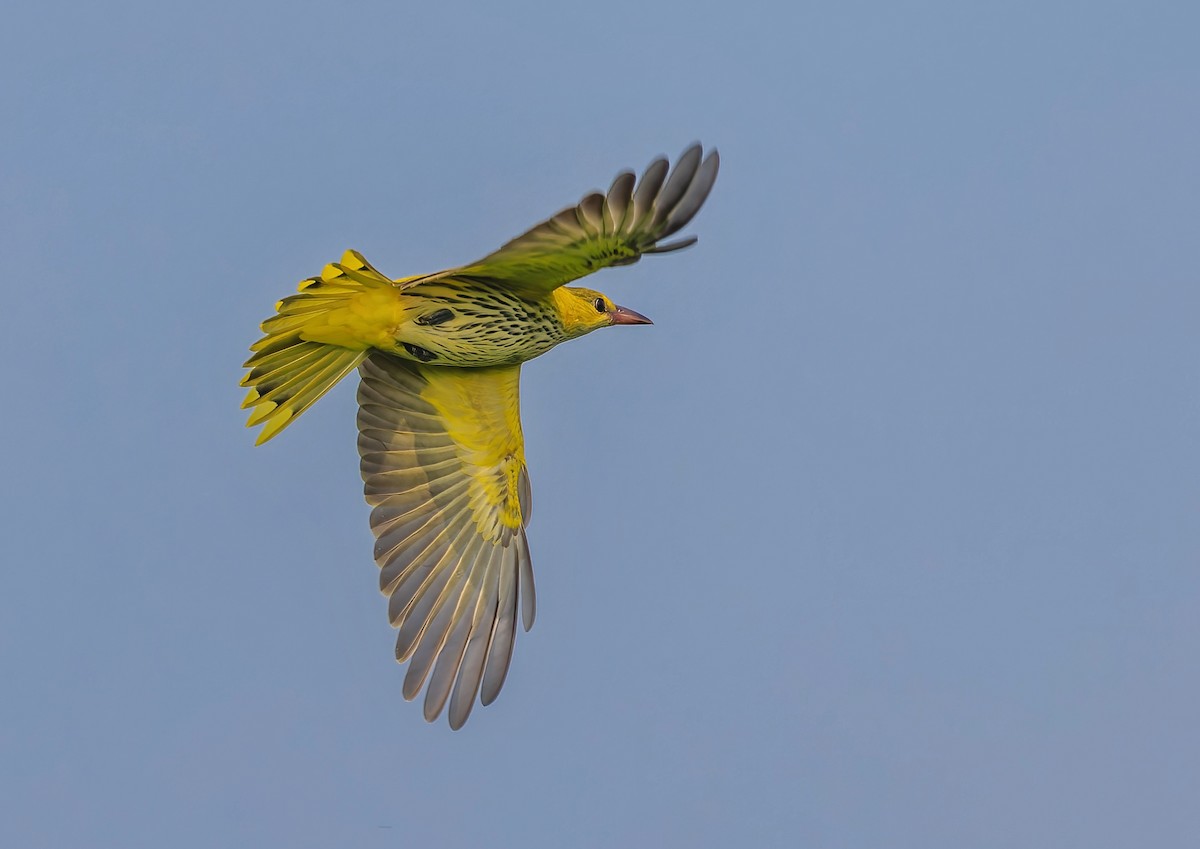
 macaulaylibrary.org
macaulaylibrary.org
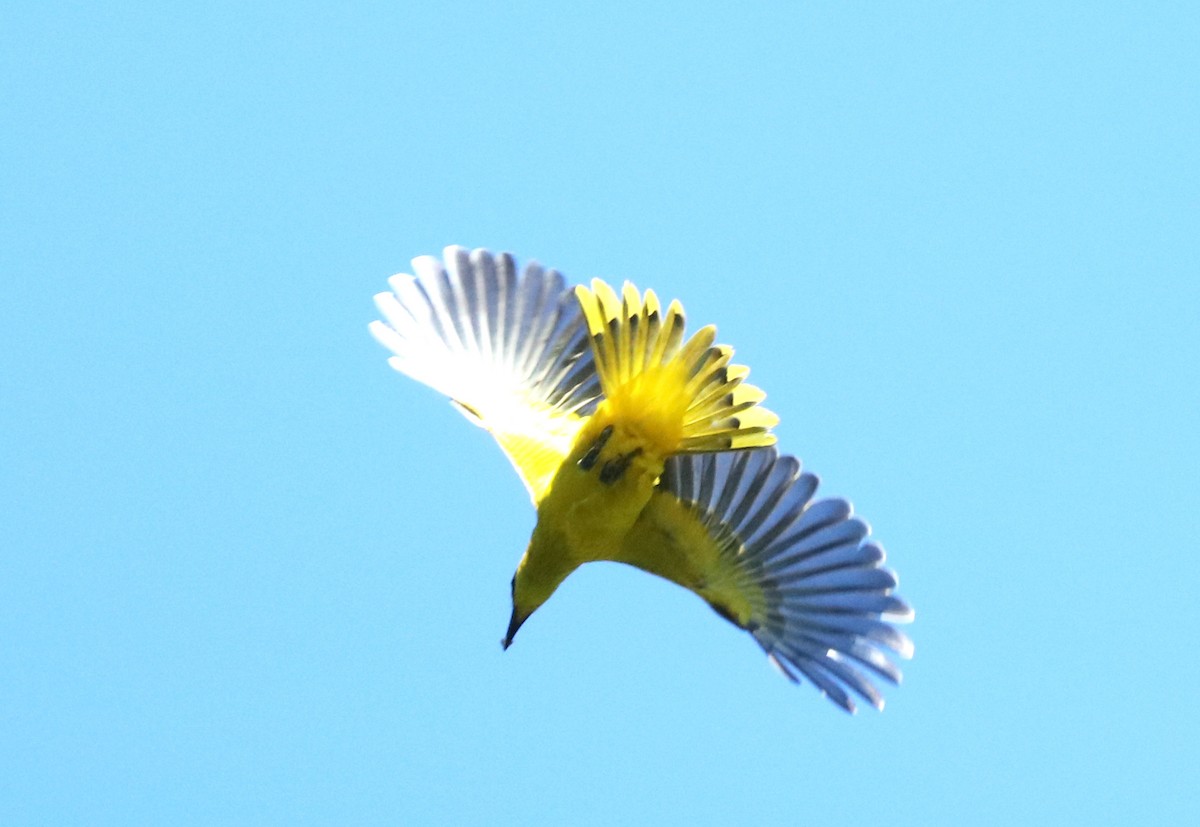
 macaulaylibrary.org
macaulaylibrary.org
Re No. 4: In Blasco Zumeta's guide median and greater upperwing coverts also seem to have dark centres. Is it about the background colour (more yellowish in Black-naped, more greenish in Eurasian)?
Quick question about No. 5:
The black doesn't appear to extend to the nape here--what makes this particular individual (that's another bird from the same area and time) Black-chinned, not Indian Golden Oriole (only one photo available)?
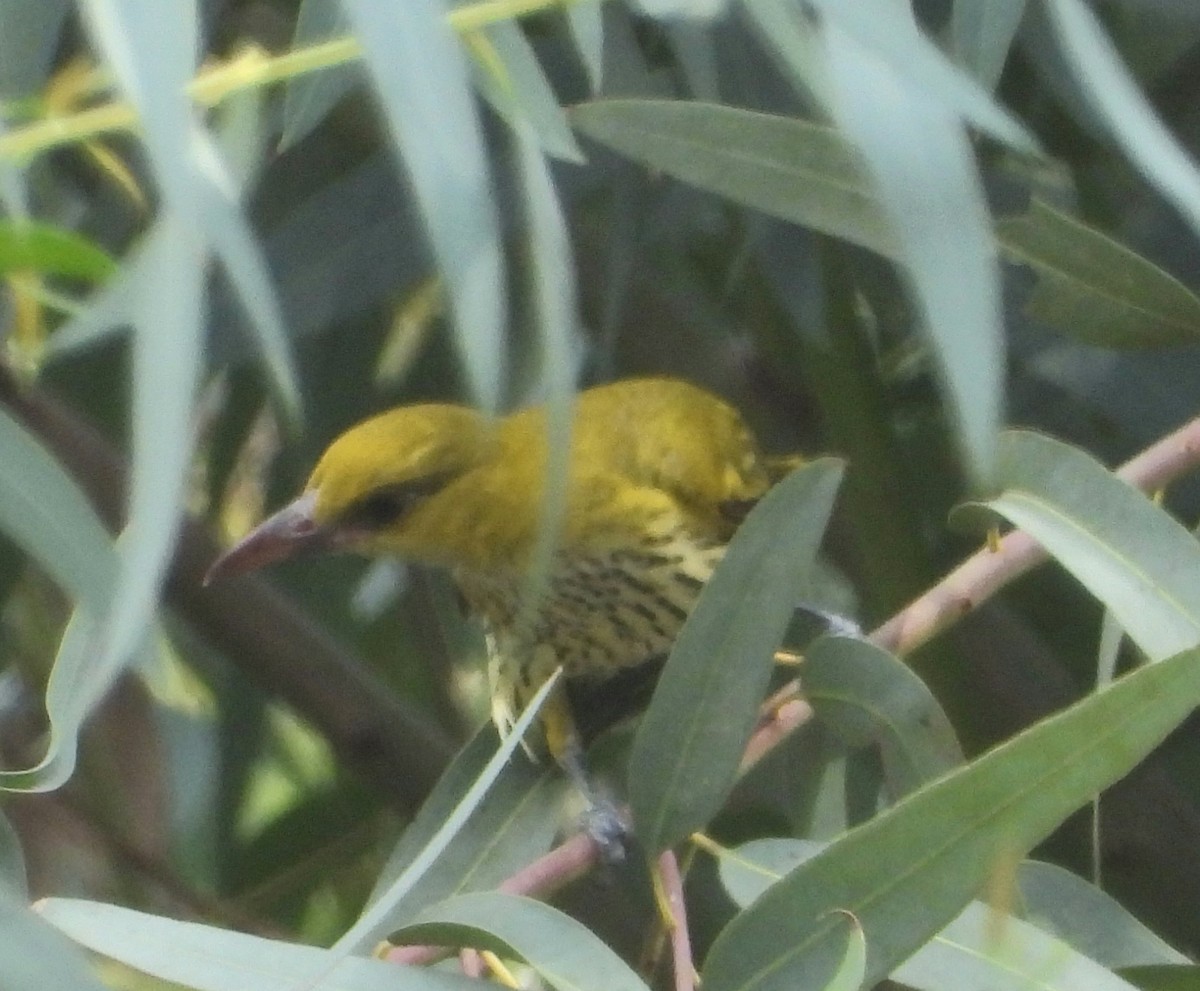
 macaulaylibrary.org
macaulaylibrary.org
Re No. 1: Is it about the amount of yellow in the undertail or in the uppertail? Does the validity of this criterion depend on the age of the birds under comparison?
Indian:
Uppertail:
ML205712241 - Indian Golden Oriole - Macaulay Library
Macaulay Library ML205712241; © Arnau Bonan; Ongtüstik Qazaqstan oblysy, Kazakhstan
ML609695770 - Indian Golden Oriole - Macaulay Library
Macaulay Library ML609695770; © Prem swaroop Kolluru; Visakhapatnam, Andhra Pradesh, India
Eurasian:
Uppertail:
ML365930981 - Eurasian Golden Oriole - Macaulay Library
Macaulay Library ML365930981; © Ana Amaral; Figueira de Castelo Rodrigo, Guarda, Portugal
ML596014821 - Eurasian Golden Oriole - Macaulay Library
Macaulay Library ML596014821; © Sami Tuomela; South Karelia, Finland
ML608584770 - Eurasian Golden Oriole - Macaulay Library
Macaulay Library ML608584770; © Jonathan Sammut; Malta, Malta
ML331957221 - Eurasian Golden Oriole - Macaulay Library
Macaulay Library ML331957221; © Adel Shamsizadegan; Fars, Iran
ML232960591 - Eurasian Golden Oriole - Macaulay Library
Macaulay Library ML232960591; © Karthik Thrikkadeeri; Jihočeský kraj, Czech Republic
Black-chinned:
Uppertail:
ML459944411 - Black-naped Oriole - Macaulay Library
Macaulay Library ML459944411; © 雀实可爱 鸦; Sichuan, China
ML126988151 - Black-naped Oriole - Macaulay Library
Macaulay Library ML126988151; © Mohammed Sayeer; Palakkad, Kerala, India
ML482263291 - Black-naped Oriole - Macaulay Library
Macaulay Library ML482263291; © 浙江 重要鸟讯汇整; Zhejiang, China
ML105803161 - Black-naped Oriole - Macaulay Library
Macaulay Library ML105803161; © John Bruin; Bali, Nusa Tenggara, Indonesia
Re No. 4: In Blasco Zumeta's guide median and greater upperwing coverts also seem to have dark centres. Is it about the background colour (more yellowish in Black-naped, more greenish in Eurasian)?
Quick question about No. 5:
The black doesn't appear to extend to the nape here--what makes this particular individual (that's another bird from the same area and time) Black-chinned, not Indian Golden Oriole (only one photo available)?
ML542545961 - Black-naped Oriole - Macaulay Library
Macaulay Library ML542545961; © Elham Shaniti; Hormozgan, Iran
Attachments
Last edited:
Users who are viewing this thread
Total: 2 (members: 0, guests: 2)




